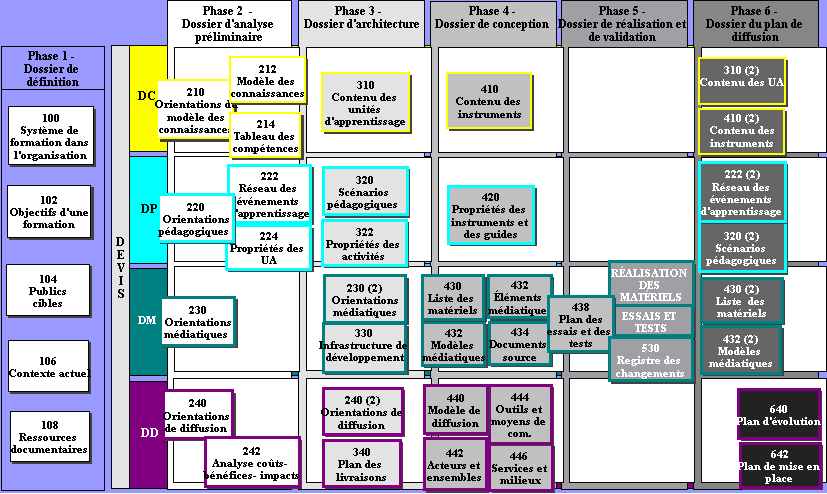MISA
Jump to navigation
Jump to search
Definition
- MISA is an instructional engineering method describing graphically the instructional design processes and their products which define a learning system completely. MISA supports 35 main tasks or processes and around 150 subtasks. The method has been totally represented within the MOT knowledge editor. [1]
- MISA = Méthode d'Ingéniérie cognitive de Systèmes de Téléapprentissage
MISA Components
The MISA method identifies four axis
- DC: Design of Content (know-that and know-how)
- Knowledge and Skill Representation
- DP: Design of Pedagogical specifications
- Application of Teaching Methods and Approaches
- DM: Design of Materials
- Specification of Learning Materials
- DD: Design of Delivery
- Delivery Planning
There are 6 phases:
- Definition of the project (dossier)
- Preliminary analysis
- Definition of the course architecture
- Design of the various elements
- Implementation and validation
- Diffusion (field implementation)
Roughly, a timeline for development could look like this:
The 4 components split over the 6 phases lead to the 35 main tasks:
Software
MISA MOT Software is free for non-profit organizations we believe) that can be obtained from Cognigraph.
- MOT is a specialized concept map editor
- MOTPlus includes support for IMS Learning Design
Links
References
- Gilbert Paquette, Instructional Engineering in Networked Environments, Wiley, ISBN 0-7879-6466-2
- (Todo: Add the 2 french books)
Content of this article has been taken from EduTechWiki (en) or EduTechWiki (fr) at the date indicated in the history. DKS was the main founder and main contributor of EduTechWiki. If you cite this page you also must cite and credit EduTechWiki, according to the CC BY-NC-SA license. View the pageinfo-toolboxlink for this article.


